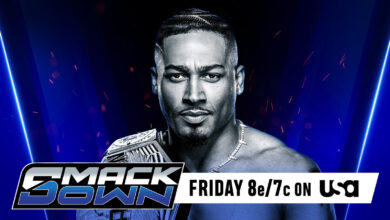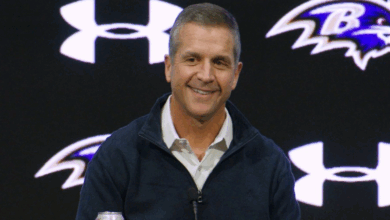Misawa vs. Kawada: 25 Years Later: How The Greatest Match Of All Time Endures

Back in January, my dear, close, personal, longtime friend Dylan Hales wrote a Twitter thread that brought up a subject that had been gnawing at me for quite some time. Essentially, when internet wrestling boards were beginning to take shape and the pro wrestling internet landscape was coming of age, some of the folks who had been there from the beginning began creating a specific narrative. This narrative carried on through most of the 2000s and became amplified during the time of the SmarksChoice wrestling message board’s Greatest Wrestler Ever poll in 2006.
At the end of the voting, somewhat surprisingly, it was Jumbo Tsuruta, not Ric Flair or Terry Funk or any other of The Usual Suspects that had come up during the Stone Age of the so-called Internet Wrestling Community, that was named the winner. It was contentious to say the least; Tsuruta’s untimely death due to complications from a kidney transplant in 2000 jumpstarted a review of his career. While the Four Pillars of Heaven in All Japan Pro wrestling had become deities during the tape trading days even before rec.sport.pro-wrestling started up at the dawn of the Internet, the idea of Tsuruta being as good or better than them was a fresh perspective during the footage explosion that came with the move from VHS to DVDs at the time. From there, the rise of widespread footage access through the earliest online distributors and peer-to-peer file sharing websites only made Jumbo’s case stronger as it became easier to watch his footage from the 1970s and 1980s.
In 2019, the oversaturation of wrestling footage availability has led to mass non-consensus amongst wrestling fans to the highest degree. When the footage was concentrated and the community was smaller, it was easier than ever for the “influence shaping types,” as Hales called them, to become the purveyors of The New Testament, according to Jumbo. The parroting began (including from this author for a time) and before you knew it, Jumbo was the GOAT and everyone else was, well, goats.
So how does this phenomenon work with matches? The culture has undoubtedly changed, but has it evolved? Are folks able to look at old matches without recency bias and the desire for new concepts to take hold? Do the ideas of increased athleticism, modernized movesets and sequences, and smaller attention spans of the present day allow for older matches to retain the luster that made them so revered when they were harder to find and highly touted? The context for so much has changed that selectivity and individuality now outweighs the consensus. As Hales posits, in many ways it’s now better to be different and have your own opinion than help build around a singular narrative, even if it means dealing with a few trolls along the way.
Today is the 25th anniversary of what was generally regarded as the consensus Greatest Match of All Time from the tape trading days. For the third time during his era-defining Triple Crown title reign from 1992 to 1994, Mitsuharu Misawa defended against Toshiaki Kawada. It was a match that was highly anticipated amongst All Japan’s rabidly loyal fanbase; their two previous matches had been absolutely sensational affairs and highly competitive, with the 20 months that had passed since Kawada’s first challenge swelling the expectations to untold heights. Similarly, for the earliest of tape traders who were able to get All Japan TV tapings right after their original airings, there was anticipation of this match becoming the opportunity for the ascendant Kawada to finally, maybe, probably pin Misawa after failing so many times before, not just in a title match setting, but in literally any match where the two were across from each other. Even dating back to their respective All Japan debuts, Kawada had never once gotten a three count on Misawa.
What has rarely been talked about, if ever, is that the tape traders and newsletter subscribers at the time had a fandom that basically matched the fervor of All Japan’s native fanbase, if not exceeded it in some ways. Shohei “Giant” Baba rarely, if ever, ran outside of Tokyo, having built up the promotion in the guise of the old United States-based territories due to their partnerships with the NWA and AWA since the opening of the promotion in 1972. Keeping fans local and able to follow the shows easily, even without a regular primetime TV slot (most episodes ran late at night, sometimes after midnight), allowed him to tell more nuanced stories where the fans would glob on to each moment of each match, allowing stories to be weaved in the most intricate of ways. The matches were layered with references to each other so that fans would be able to make the connections, even if certain moments didn’t necessarily involve the wrestlers that were in the current match. The hierarchal structure of both the roster and the match style allowed for even the slightest alterations to shift the story in seismic bursts. This had been done before in wrestling, but not nearly as nuanced as the way All Japan did, and arguably, not nearly as impactfully. A single move or injury could have reverberations throughout the entire company, and Baba as head booker along with his top hands were smart enough to work those into the matches in creative ways to tell stories that deliberately took not just months to tell, but several years in some cases. Thus, the “King’s Road” style was born.
This idea truly became apparent after the departure of Gen’ichiro Tenryu and other native stars from the company to create SWS in 1990, which forced Misawa, Kawada, Kenta Kobashi, and eventually Akira Taue to the forefront. In a famous tag match on May 14 of that year against Yoshiaki Yatsu and Samson Fuyuki, Misawa told Kawada mid-match to remove his mask. Gone was Tiger Mask II, and instead Misawa became the face of the promotion for the next decade. Even having been under the mask for the better part of five years, the crowd erupted at the removal and actually began chanting “MI-SA-WA!” at the top of their lungs, remembering Misawa’s time as a burgeoning junior heavyweight before his Mexican excursion, where he returned and then donned the mask. The loyalty and attentiveness of the crowd paid off the angle in spades, and three weeks later, Misawa’s upset of Tsuruta on June 8 made Misawa the future of the company.
If you begin with that concept in mind while watching this match, you also understand how folks who talked about 90’s All Japan at RSPW and during the early message board days went into great detail about the matches and the stories they told, and why, at the top of the mountain for so long, was this match. In addition to being at the top or near the top of many “Greatest Matches Ever” polls over the years, it was the first match mentioned in the famous Death Valley Driver Video Review 100th issue, and while they didn’t necessarily put the matches in that issue in any particular order, it being the first match mentioned in the issue essentially sealed up the discussion of it being the best match ever to many.
So here, at the confluence of All Japan fandom and early internet wrestling fandom, we have this match. It’s a testament to the story Baba had told for the four years-plus leading up to it, and as fans would figure out for years afterwards, the connection between the two wrestlers ran much deeper than even Baba’s story. That, of course, isn’t necessarily implied in the original construction of the match, but it’s also difficult to separate the added knowledge from how the match is perceived. It’s only added to the match’s legend over time, and essentially became an incentive for folks to try and connect more threads and discover Easter eggs that came with the unearthing of more and more footage.
Baba’s original vision, however, is pro wrestling at its finest. The crowd was electric in ways few wrestling crowds have ever been. Kawada supporters were vocal, but Misawa had been the champion for almost two years straight. After he went through literally everyone thrown at him during his title reign, he had endeared him even more to the fans as the ace of the company. However, when the bell rang, the Kawada fans drowned out the Misawa fans, thinking that on this night, in his third opportunity to lift the straps from Misawa and fresh off his win at the Champions Carnival in April, Kawada could finally put it all together and vanquish his generational rival. For 40 seconds, they circle each other as the crowd reaches their fever pitch. Then, finally, the lockup.
The early moments show just how even both men were: Kawada traded chops with Misawa’s elbows (with Misawa’s elbows obviously the stronger strike), but Kawada’s kicks could equal the elbows in the right instances. Sure enough, Misawa avoided one kick before eating a spin kick to the jaw. Misawa then used his agility to work into a backdrop suplex, and just like that, the two were square again. The establishment of Kawada being on equal footing is the most important thing in the match, and the foundation it laid for the 36 minutes to come means every time Kawada looks like he has an advantage, it’s not only earned, but lays credence to him being able to finally defeat the then-unbeatable ace.
That then led to the Kawada control segment, which occurred after Misawa uses a couple dropkicks to send Kawada to the floor. When Kawada counters the elbow off the apron and then responds to a whip into the guardrail with a hard clothesline, all of a sudden, Kawada has the early advantage in the biggest match of his career. It’s then that Misawa starts bleeding from the ear after Kawada started striking him in the corner, and after taking a shot to the chin that rocked him for a two count, he took a powder, only for Kawada to go right back in control.
— Tim Livingston (@MrTimLivingston) June 3, 2019
This start was what made it different than most big title matches. Misawa had been in situations before in his title reign, most notably against larger gaijin opponents, where he had to fight from below to figure out an advantage. Here, instead of fighting from below, Misawa decided to target Kawada’s balky left knee that he injured six months earlier in the 1993 Real World Tag League. Whereas Kawada wanted to show Misawa essentially by force that he was his equal, Misawa was quick to remind Kawada that he knew what his weakness was and would not be afraid to resort to attacking it when the opportunity arose. Kawada’s early assertiveness led Misawa to play that card earlier than he wanted, but at the same time, he had to do something before Kawada gained too much of an advantage.
The knee work from Misawa grounded Kawada immediately, giving him a bad base to try and fight back with his kicks. It’s here that the style really shines. Kawada can only get a desperation elbow at first to try and fell Misawa, but Misawa easily finds a way back. After blocking a Tiger Driver, Kawada then chops his way back in with a bit more success, only to eat another hard elbow. After a Misawa dropkick, Kawada was able to absorb the blow and recoil for a kick. Then, after fighting Misawa off one more time, he hits a jumping gamengiri to fell Misawa for good and not only go back in control but look like a threat. The gradual way comebacks are made in the match only builds the drama when a big move is hit, and it’s a logical way to get the crowd invested in every move meaning something.
— Tim Livingston (@MrTimLivingston) June 3, 2019
The two then go back and forth with bigger and bigger strikes, each man looking for their first big move, whether that’s Kawada’s powerbomb or Misawa’s Tiger Driver or Tiger Suplex. The first one to hit their move is Misawa with a two count off a Tiger Driver, which signals that the match is entering the final stretch at about the 21 minute mark, leading to 15 minutes of some of the most dramatic, well-crafted and heart-pounding action in wrestling history.
The build in the earlier part of the match meant that the transitions meant more the stretch. Misawa’s facelock that famously submitted Tsuruta years earlier gets a great two count, and then Kawada countered a Misawa diving elbow with a picture perfect gamengiri. Kawada’s powerbomb is countered, but after a vicious lariat, he hits the Dangerous Backdrop, a move he didn’t have at his disposal in previous title defenses, which leads him to hit his patented powerbomb that he learned from his mentor Tenryu for two. The thing to note here is that Misawa kicks out somewhat early in the two count, not at the last moment, which signals Kawada that there’s much more work to do, and he obliges, pounding away with more kicks and a vicious release German Suplex that lands high, forcing Misawa to roll to the floor. Kawada then successfully hits his second powerbomb, but again Misawa kicks out at two, leading Kawada to get desperate.
Misawa blocks a third powerbomb, so Kawada transitioning to his Stretch Plum submission gets him an opportunity to try and put Misawa out in a way he doesn’t see coming, and even as the crowd gets behind Misawa as they normally would, the Kawada chants even drown those out, and the pin opportunity only gets two. Then Misawa’s desperation starts to show with an elbow that puts Kawada down. Even after Kawada fires back with a kick, Misawa is able to put him down with a second, and then his patented spinning lariat after the crowd marvels at the match hitting the 30-minute mark leads to the final minutes.
— Tim Livingston (@MrTimLivingston) June 3, 2019
It’s familiar territory for Misawa from the first two title defenses. He starts trying to suplex Kawada into oblivion, starting with a release German and then following with the Tiger Suplex Hold, which was the gameplan in the previous wins. Kawada knew this and figured his time was running out, so he blocked another and hit a surprise koppo kick. A second sent Misawa to the floor, but instead of it buying time for Kawada’s next offensive burst, it’s Misawa who is to his feet first, staring down his rival as Kawada realizes it’s now or never. Kawada rises to his feet as Misawa re-enters and starts wailing away as best he can, throwing everything he can at Misawa, but Misawa drops him with an absolutely killer rolling elbow. He then hits an elbow combination that led to the end of his second defense against Kawada, and although Kawada is able to avoid the Tiger Driver attempt, his follow up koppo kick is blocked, and Misawa turns the momentum into the running elbow that he used to take the Triple Crown from Stan Hansen nearly two years earlier.
The finish is legendary for a reason. With everyone in the building thinking a Tiger Driver was coming, Misawa lifted up Kawada and instead of flipping him over like normal, he dropped him vertically on his neck and shoulders violently, as the crowd almost goes silent. Misawa pushed the legs forward and Joe Higuchi counted an emphatic 3 at 35:50, leading to a delirious crowd rushing the rails with Misawa chants. Each man’s seconds run into the ring with cold paks and spray as both men collapse to the mat, and after Misawa stands up to receive his titles and ceremonial trophy, he goes over to Kawada and makes sure he can stand himself, shaking his hand to acknowledge Kawada’s effort being the best he had given in their three matches.
— Tim Livingston (@MrTimLivingston) June 3, 2019
The aftermath and the history that was uncovered in the years following the match have only added to the legend of the match. The knee work that was so central to Misawa’s control segment that got him back into the match wasn’t just traced back to the 1993 Real World Tag League, but all the way back to 1988! In the Real World Tag League that year, Kawada teamed with Tenryu and was facing Hansen and Terry Gordy in the final match of the round robin tournament, with the winner of the match winning the tournament. Halfway through the match, Hansen and Gordy isolated Kawada on the outside and took apart his knee, injuring him so badly that Tenryu basically had to go at it alone the rest of the match, which led to Gordy and Hansen winning the match and the tournament. It came to light with the aforementioned footage explosion, establishing an origin to a near decade long meta-story.
With retrospect, there is still some questioning of the booking decision itself to put Misawa over Kawada for the third time in the same reign. Misawa would lose the titles in his next defense on July 28, 1994 to “Dr. Death” Steve Williams, whose Homicidal Backdrop Driver had almost won him the Champions Carnvial and became the most devastating finisher in the company since Hansen’s time as a top-of-the-card level was starting to wind down. Only three months after that match, Kawada got his shot at Williams and beat him to win his first Triple Crown. However, his title reign did not mean much in the end, as after going to a famous (infamous?) 60-minute draw with Kobashi in January 1995, Hansen defeated Kawada for the titles in March only to drop them back to Misawa in May.
Kawada finally got that elusive pin over Misawa in the famous June 9, 1995 tag team match where he and Taue defeated Misawa and Kobashi to win the Double Tag Team Titles, a match that belongs in the same conversation as this one. However, Kawada had to watch his tag partner beat Misawa for the titles even before he did in 1996. Yes, Taue had seniority over Kawada, but he had only recently risen to be a true threat to Misawa over the previous year, and he was able to make it happen much quicker than Kawada had, even as Kawada failed in another opportunity to lift the strap during Misawa’s second reign.
By the time Kawada finally beat Misawa in a singles match, it was in front of a big crowd at the Tokyo Dome in 1998 for the Triple Crown, but the moment had lost its luster in a company that started having very real troubles by the end of the decade. Baba’s death in early 1999 only exacerbated those issues, which led to the exodus of nearly the entire company roster in 2000 led by Misawa to form Pro Wrestling NOAH, with only Kawada and Masa Fuchi staying behind out of loyalty to Baba.
Even that booking decision doesn’t take away from the luster of this match. The discourse around wrestling has changed dramatically since the legend of this match began, but even with that discourse becoming more reactionary as people fight to give their ideas prominence in a more crowded public forum, there’s a reason this match is known simply by its date. It’s a testament to storytelling, a testament to patience, and perhaps most importantly, a testament to what do with the earned goodwill of a company’s fanbase. It’s not a big match retroactively or a famous match because of some narrative that was crafted around it.
There’s an argument for it being the most influential match of all time on top of it being the greatest. It’s the peak of a style that has now become the norm basically all over the world, whether it’s truly influenced by it or a bastardized approximation. It’s devoid of overkill, yet somehow for a match that lasted 36 minutes, you want more of it because of how compelling it was. The struggle for Kawada to come up agonizingly short of his generational rival, but to have it have such a definitive finish shows how much thought went into the match structure just with that decision. It simultaneously shows that Misawa was dealing with the best folks threw at him for almost two years straight, and that if it came to it, he’d attack a weakness or be able to think on the fly. That experience was just better than the effort Kawada made, even if that meant Kawada pushing himself to the brink, which he did. It carries such a range of emotions and attributes to its structure that it could be picked apart at the micro level to support the overall themes that were obvious. Those nuances get lost in a lot of modern matches due to the layouts hammering home the obvious instead of letting the fans connect the dots, which is why the legacy of this match has endured for so long.
It’s a celebration of so much in wrestling; the joy of watching two wrestlers in their primes put on undoubtedly the best performance of each of their careers at the moment that folks expect them to happen. It tells a tragic tale in the face of so much optimism for Kawada, showing that not all growth is linear. It’s thoughtful and varied and intense and engaging and gut-wrenching and enthralling and all the other adjectives you’ve ever wanted to throw at a professional wrestling match. It’s the ultimate match that can be re-watched ad infinitum without losing its value on repeat viewings. From Dean Rasmussen’s review from DVDVR #100: “It’s got all the elements of what makes great wrestling matches great, but it has something else that you can’t explain – like Roy Orbison’s voice or a Matisse painting. It’s ethereal and great and it’s art and you should f****** see this match.” And there’s a good chance that sentiment will be just as valid 25 years from now.




